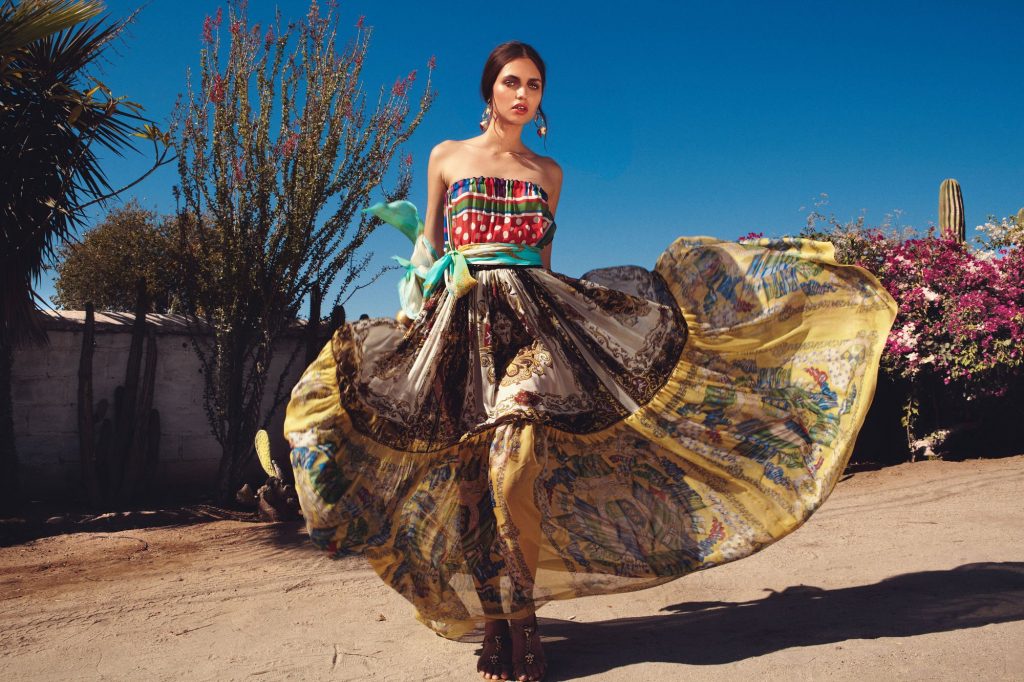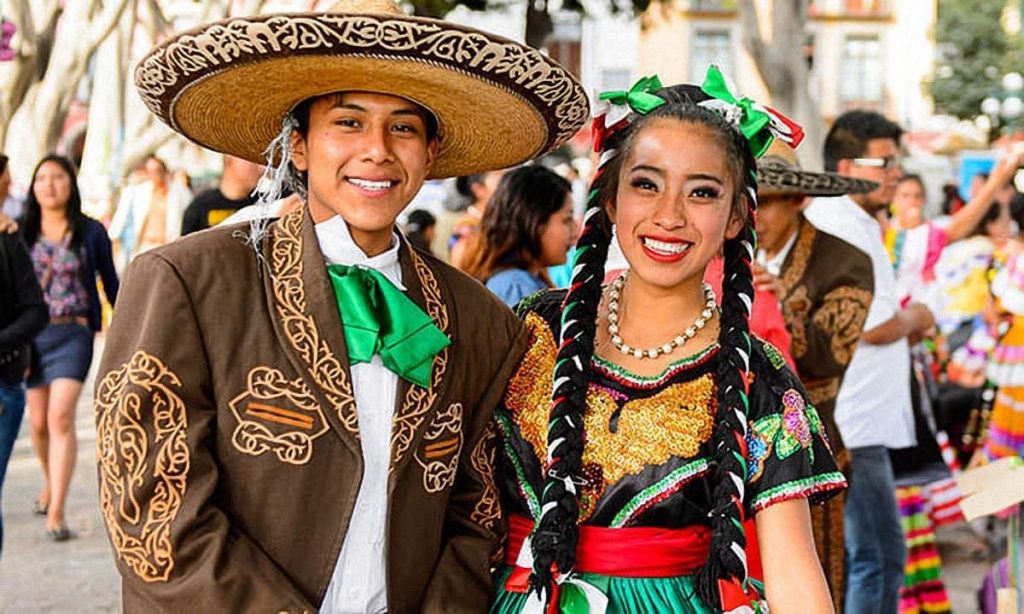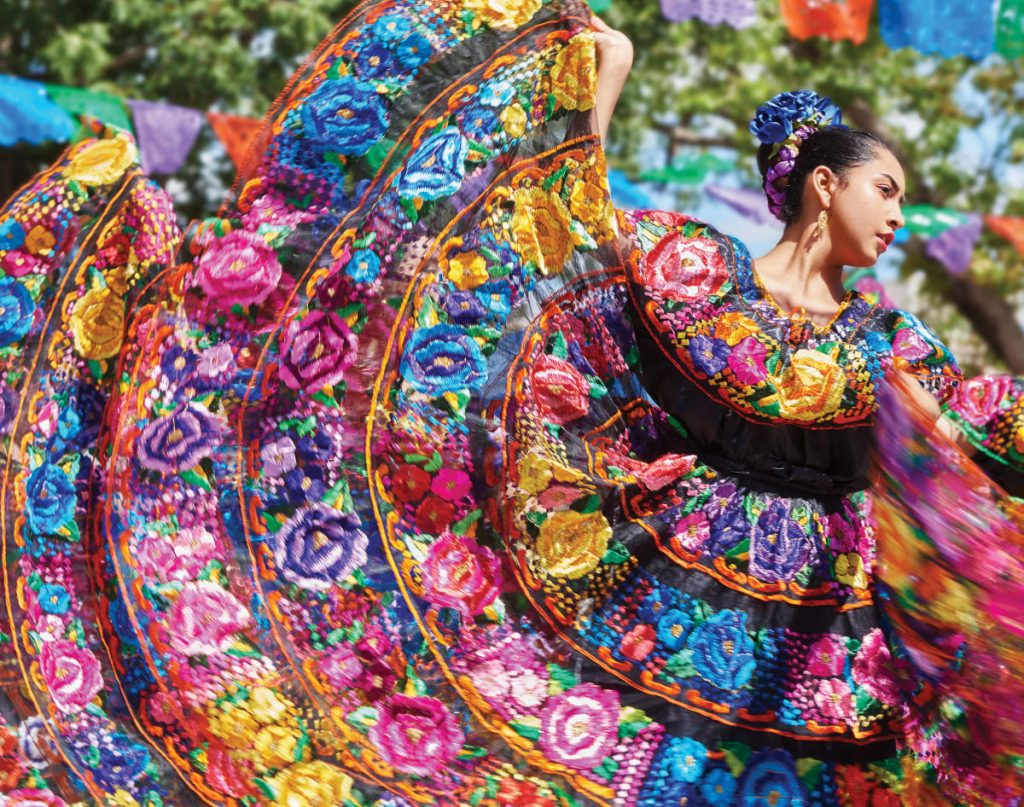Mexican fashion and style: traditions and influence on world fashion
Mexican fashion is a unique fusion of traditional cultural elements and modern trends that is reflected in the clothing, accessories and lifestyle of Mexican people. It is based on centuries-old traditions of textile art, bright colors, and symbolism inherited from ancient civilizations. Mexican fashion not only represents a way of self-expression and cultural heritage, but also has a significant influence on the global fashion industry.

Mexican fashion has deep roots in the traditional textile craft that was developed by ancient civilizations such as the Aztecs and Mayans. They used a variety of embroidery, weaving and fabric dyeing techniques to create unique patterns and a recognizable style of clothing. These traditions have survived the centuries and still inspire Mexican designers today.
In the modern context, Mexican fashion has been recognized on the world stage for its originality and vibrancy. Mexican designers such as Carla Ferrer, Ricardo Seco, and Christian Culici actively incorporate traditional motifs and techniques into their collections, which gives them a unique style and attracts a global audience.
Moreover, exports of Mexican fashion and accessories continue to grow, making the industry an important player in the global fashion market. Mexican style textiles, embroidered bags, and jewelry are becoming increasingly popular among fashion connoisseurs in different countries.
Thus, Mexican fashion plays an essential role in the global fashion industry, presenting a unique combination of tradition and modernity. Its bright colors, intricate patterns and rich symbolism make it unique and sought after not only in Mexico but also abroad.
Traditional elements of Mexican fashion

The traditional elements of Mexican fashion include many unique details that reflect the country’s rich cultural heritage. One of the most distinctive elements is textiles, which are characterized by high craftsmanship and rich symbolism.
Among the most famous textile traditions in Mexican fashion is the serape. This is a typical Mexican garment that is a poncho with a cut-out opening for the head and widened edges. The serape is traditionally made of wool and decorated with bright geometric patterns that reflect local cultural traditions and symbolism. This article of clothing has its roots in the pre-Spanish Conquest period, when the Aztecs and other local peoples used wool to create clothing to protect themselves from the cold in the mountainous regions of Mexico. This article of clothing became not only practical over time, but also a symbol of cultural identity.
Another characteristic element of Mexican fashion is rebozos, long scarves or shawls, also often made of wool or cotton. Rebuzos can come in a variety of colors and are decorated with embroidery or lace. They were used by women from all social classes to carry infants and as part of national costume at festivals and celebrations. Over time, rebusos became part of the everyday clothing of Mexican women, and their designs and patterns became varied and rich. The first references to rebusos can be found in documents dating back to the 16th and 17th centuries.
Embroidery is an integral part of Mexican textile culture. Mexican artisans use various embroidery techniques such as cross stitch, “exit needle” stitch, and applique to decorate clothing, accessories, and furnishings. Embroidery patterns often have deep symbolic meaning, reflecting mythology, natural motifs, and traditional ornaments and geometric patterns. This technique was developed by Mexican Indians long before the arrival of the Spanish. They used it to decorate clothing and household items, often using natural dyes and native plants. Over time, embroidery became an integral part of Mexican culture, maintaining its traditions and techniques until today. There are records of embroidery in what is now Mexico dating back to Aztec times.
Traditional motifs used in Mexican embroidery include images of plants, animals, birds, and symbols of local Native American cultures. For example, flowers, especially the kala, play an important role in Mexican embroidery, symbolizing life, death, and the Day of the Dead holiday.
Overall, traditional elements of Mexican fashion such as serape, rebusos, and embroidery are not only an important part of the national cultural heritage, but also continue to influence contemporary design and style in Mexico and beyond.
The influence of Mexican culture on global fashion

The influence of Mexican culture on global fashion extends over many decades and has had a significant impact on trends and style in the global industry. One of the key aspects of this influence is the rise of Mexican designers on the global fashion scene.
Many Mexican designers have become widely recognized outside of their home country for their talent and unique style. For example, Carla Ferrer, known for her exquisite couture gowns and artisan-style embroidery, has earned acclaim from critics and fashion experts around the world. Ricardo Seco, known for his bold and elegant collections, has also been recognized on the global fashion scene. These and many other Mexican designers demonstrate a high level of craftsmanship and inspire millions of people around the world with their work.
Mexican fashion has also become the subject of growing attention from global consumers and the fashion industry. Mexican fashion exports have experienced a remarkable growth in recent years. Many Mexican brands and designers are actively promoting their collections outside the country, attracting the attention of foreign buyers. Especially popular have become Mexican textiles, embroidered bags, jewelry and accessories, which are often ordered by tourists and fashion connoisseurs from different parts of the world.
In addition, Mexican elements and motifs are increasingly common in the collections of major global brands. For example, famous fashion houses such as Chanel, Valentino, Dolce & Gabbana and others often use traditional Mexican patterns, embroidery and colors in their collections. This gives their products a unique and exotic look, and also allows them to attract new audiences and expand their market.
In summary, Mexican culture continues to have a significant impact on global fashion through the talent of local designers, the growing popularity of Mexican fashion abroad, and the incorporation of Mexican elements into the collections of major global brands. This creates a unique synthesis of cultures and brings diversity and originality to the global fashion industry.
The Evolution of Mexican Fashion

The evolution of Mexican fashion is a fascinating journey from traditional folk costumes to the modern variety of styles and trends. Let’s start with the history of traditional Mexican clothing, which over time has become an important source of inspiration for modern design.
Traditional Mexican costumes such as the chipilla and trajes reflect the richness of the country’s cultural heritage. The female folk costume of the chipilla consists of a simple dress with wing sleeves and is embellished with embroidery and lace. The traditional male costume, trajes, includes wide pants and a shirt with embroidery on the chest. These outfits reflect the local traditions and cultural characteristics of the different regions of Mexico.
With globalization, Mexican fashion has become more diverse and eclectic. The influence of global fashion trends became tangible, and Mexican designers began to experiment boldly, mixing traditional elements with modern styles. For example, traditional embroidery motifs and patterns can be integrated into modern cuts and details of garments, giving them a unique and original look.
Innovation plays an important role in the evolution of Mexican fashion. Many Mexican designers actively incorporate new technologies and materials into their collections, allowing them to create unique and modern designs. For example, the use of sustainable and eco-friendly materials is becoming increasingly popular among Mexican brands, reflecting the growing interest in sustainable fashion.
An important aspect of the evolution of Mexican fashion is also the blending of cultural styles. Mexico is a country where different cultures and traditions converge, and this is reflected in its fashion. For example, Mexican fashion can incorporate elements from Native American, Spanish, African, and other cultures, creating a unique and layered style.
Thus, the evolution of Mexican fashion from traditional folk costumes to contemporary designs is an exciting process that reflects the richness of Mexico’s cultural heritage, the influence of globalization, innovation, and the mixing of styles. This makes Mexican fashion unique and appealing to both local and global audiences.
Mexican fashion and identity

Mexican fashion is closely linked to the cultural identity of the people and reflects the richness of their history, traditions and values. Clothing plays a key role in expressing this identity and is a means of self-expression for many Mexicans.
The symbolism and meanings of Mexican elements in everyday fashion are often a reflection of the ancient traditions and mythology of local cultures. For example, the use of bright colors and patterns in embroidery and weaving is often associated with the traditions of the Aztecs and Mayans, who considered colors to be symbols of various deities and cosmic forces. Also, many patterns and motifs have deep symbolic meaning, reflecting a connection to nature, religious beliefs and local customs.
Clothing also serves as a powerful source of pride and self-expression for Mexicans. Many proudly wear traditional Mexican costumes at festive and celebratory events, emphasizing their cultural identity and maintaining a connection to their ancestral heritage. In addition, modern designers and brands actively use Mexican elements in their collections, allowing Mexicans to express their identity and cultural values through contemporary fashion.
Mexican fashion is also a source of inspiration for many designers around the world. Patterns, fabrics and techniques specific to Mexican culture are often found in the collections of international brands and designers, emphasizing its importance and influence on global fashion. For example, traditional Mexican embroideries used in everyday clothing have become popular and sought after in various countries around the world.
Thus, Mexican fashion is not only a means of expressing cultural identity, but also a source of pride and inspiration for many people. It preserves the traditions and values of the Mexican people and continues to evolve and contribute to global fashion.
Conclusion

In the conclusion of this article, we can see that Mexican fashion is an integral part of the cultural heritage of this amazing country. From ancient times to modern times, it reflects the richness and diversity of Mexican culture as well as its influence on global fashion.
One of the key aspects of Mexican fashion is the reflection of cultural identity through clothing. The symbolism and meanings of Mexican elements such as embroidery, traditional patterns, colors, and styles play an important role in everyday fashion, helping people express their belonging to a particular culture and community.
Mexican fashion is also a source of pride and self-expression for many Mexicans. It helps to preserve the traditions and heritage of their ancestors, as well as promote them on the world stage. Many Mexican designers have successfully presented their collections at international fashion shows, drawing attention to the richness and beauty of Mexican culture.
The future prospects for Mexican fashion remain very promising. Modern technology and access to global markets provide Mexican designers with unique opportunities to promote their ideas and collections. However, it is important to remember the importance of preserving and promoting traditional elements in Mexican fashion. These elements give uniqueness and originality to Mexican style, making it recognizable and valuable in the global fashion scene.
Thus, Mexican fashion continues to play an important role in the cultural identity and self-expression of the Mexican people, as well as having a significant impact on the global fashion industry. Preserving and promoting traditional elements is important to maintain the uniqueness and authenticity of Mexican fashion in the future.
We recognize the value of cultural heritage and strive to provide clients with a relocation that will combine modern standards of quality and convenience with respect for the traditions and beauty of Mexican culture. We at Absolute Relocation Service moving company guarantee a high level of service and attention to your needs to ensure that your move to Mexico is not only comfortable, but also enjoyable.
Contact us in any way:
Telephone: (954) 773-9667
E-mail: abs@absoluteinc.org





